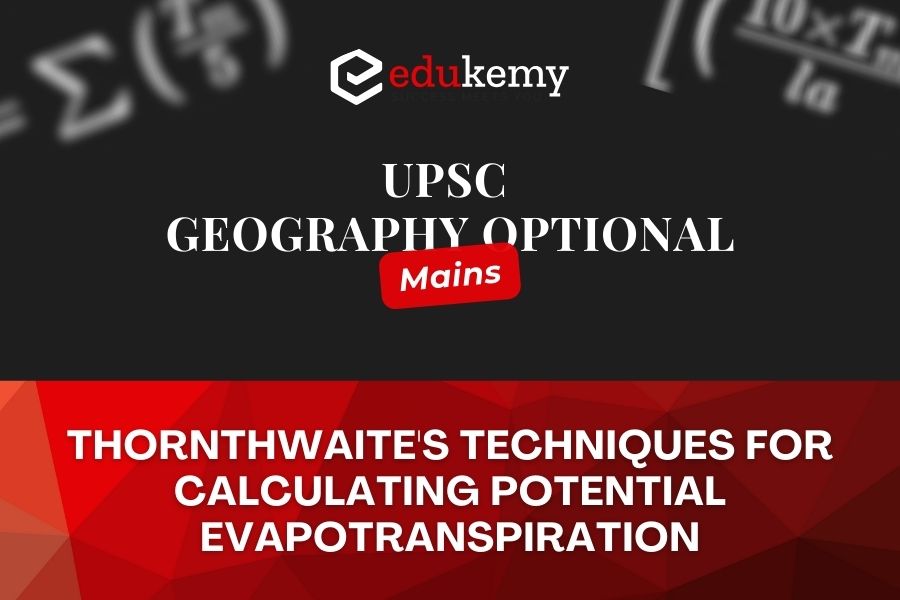
Discover the meticulous methods proposed by Thornthwaite to compute potential evapotranspiration, a pivotal aspect in UPSC Geography Optional Mains 2019. Thornthwaite’s techniques meticulously assess climatic variables to derive accurate estimations. These techniques delve into intricate factors like temperature and precipitation patterns, ensuring comprehensive evaluation. Exploring Thornthwaite’s methodologies unveils a profound understanding of environmental processes, critical for aspirants navigating the UPSC Geography Optional Mains syllabus. Delve into Thornthwaite’s nuanced approach, deciphering the essence of potential evapotranspiration calculations with clarity and depth. Mastering these techniques equips candidates with invaluable insights, augmenting their prowess in addressing complex geographical concepts. Embark on a journey through Thornthwaite’s methodologies, unraveling the essence of potential evapotranspiration computation for academic excellence and holistic comprehension.
Contents
Answer:
Introduction:
Lewis Thornthwaite was a prominent climatologist known for his contributions to the field of hydrology, particularly his method for estimating potential evapotranspiration (PET).
Body:
Thornthwaite’s method for calculating potential evapotranspiration (PET) involves several steps:

Significance of Thornthwaite’s Method:
- Widely Applicable: Thornthwaite’s method is versatile and can be applied in various geographical contexts.
- Importance in Arid Regions: Particularly valuable in arid and semi-arid areas where water resources are scarce.
- Contribution to Hydrological Studies: Used in assessing water resource management and studying the impacts of climate change on hydrology.
- Historical Importance: Thornthwaite’s method has a rich history and has served as a foundational tool in climatology and hydrology.
- Simplified Approach: Provides a straightforward method for estimating PET, making it accessible to researchers and practitioners.
- Basis for Comparison: Thornthwaite’s method serves as a benchmark for evaluating other PET estimation techniques.
Conclusion:
While it remains a valuable tool, advancements in understanding evapotranspiration processes may lead to further refinement and improvement of estimation techniques. Researchers should continue to explore new methods while acknowledging the historical importance and ongoing relevance of Thornthwaite’s contributions.
In case you still have your doubts, contact us on 9811333901.
For UPSC Prelims Resources, Click here
For Daily Updates and Study Material:
Join our Telegram Channel – Edukemy for IAS
- 1. Learn through Videos – here
- 2. Be Exam Ready by Practicing Daily MCQs – here
- 3. Daily Newsletter – Get all your Current Affairs Covered – here
- 4. Mains Answer Writing Practice – here

